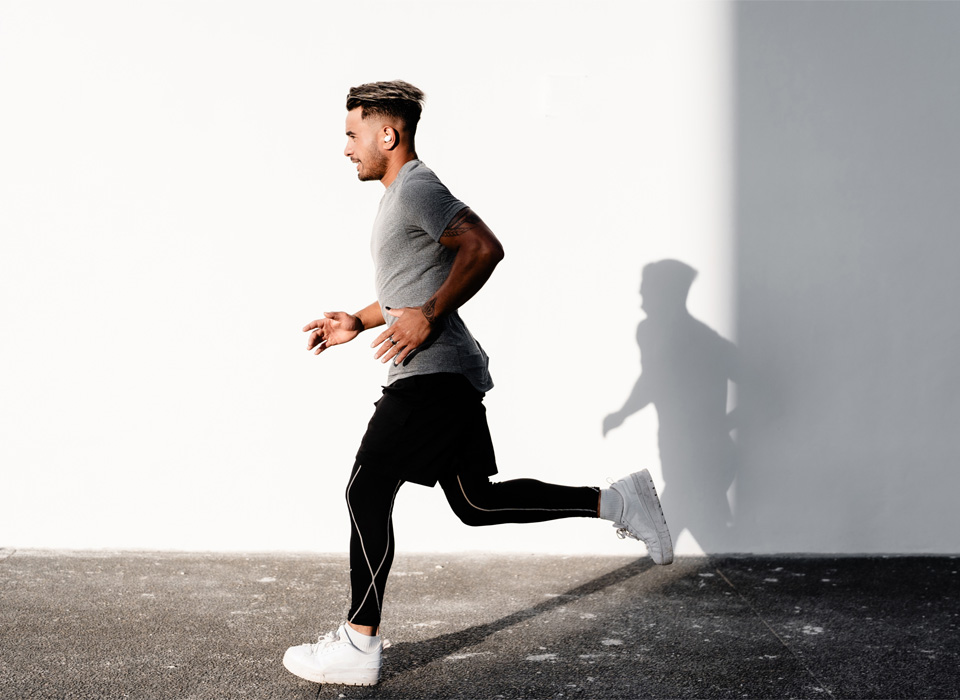I often say that if I could pick only one exercise to give to a runner, I would pick the Single Leg Romanian Deadlift, or Single Leg RDL as it is better known. This is an awesome bang for your buck exercise, as it hits many different areas and can challenge different aspects of strength and control. Let’s take a look at the exercise as a whole, and zero in on a few of the focus areas.
The Single Leg RDL is the unilateral version of the standard Romanian Deadlift, which is a hip hinge movement that focuses on eccentrically loading the hamstrings. Standing with a slight bend in the knee of the stance leg, the athlete moves forward through the trunk while simultaneously lifting the opposite leg backwards. The goal result is to move the upper body and opposite leg as one through a hinge of the hip joint, ultimately achieving a position that is parallel to the ground. Be sure to minimize any compensatory rotation through the hip or trunk! This exercise is a challenge for control as much as it is a strength exercise, so maintaining good form is key. Now that we know how to do the exercise, let’s talk about some of the benefits.
Eccentric hamstring strength
One of the most common injuries in both distance runners and sprinters is the hamstring strain. For sprinters, this most commonly occurs as an acute injury due to the explosive use of the hamstring during sprinting. For distance runners, the injury is often a chronic, over-use injury. It can occur in different areas of the hamstring, but commonly affects the area of the muscle or tendon that attaches to the pelvis (butt bone), which is referred to as an injury to the “proximal” portion of the muscle. It generally occurs due to overuse of the hamstring muscle as it tries to assist the gluteal muscles with hip extension while running. The gluteal muscles are often too “weak” to meet the demands being placed on them by the runner, causing a need for the hamstring to work overtime. This can allow for the development of a chronic “strain” of the muscle, or tendinopathy of the tendon. Single leg RDLs challenges the hamstring eccentrically, the way they are primarily used during running. By increasing the eccentric load on the hamstring with exercise, it is able to adapt and be better prepared for the repetitive stress that is placed on it during running – which allows for a reduced risk of injury.
Hip Stability
Another common cause of injury among runners is decreased stability through the hips. The hip muscles are challenged with keeping the pelvis level during stance or contact phase of running – when your foot hits the ground. If the hips are not able to keep the pelvis level, it can set of a chain reaction of undesirable positions through the hip, knee, ankle and foot. Over time, this can lead to a whole host of overuse injuries. The Single Leg RDL (when done correctly), challenges the runner’s ability to keep the pelvis level while executing the movement. This helps to train the endurance of the hip muscles so that they can continue to do their job as they fatigue, but also helps to train the nervous system to achieve and maintain the level position of the pelvis without the runner having to think about it while running.
Single Leg Dynamic Motor Control
When you break it down, running is just a repetitive series of small, single leg squats. You are always ONLY on one leg while running. With this being the case, it becomes vital to train single leg strength and motor control to prepare the body for the act of running. To correctly execute the proper technique of the Single Leg RDL, you must demonstrate some serious motor control – your nervous system’s ability to execute a movement pattern. By only doing it on one leg, it better translates over to how your body must move while running. Since motor control is a skill that must be practiced frequently to improve, working on it with the Single Leg RDL can help to improve the motor control needed for running in a way that isn’t just running!
In conclusion, the Single Leg RDL is an extremely versatile exercise with many benefits. It can be done with or without weight. It can be done with dumb bells, kettle bells or barbells. It can be done on stable or unstable surfaces. It can be done for prehab or rehab – the list could go on forever! Regardless of how it’s done, if you are a runner, it needs to be in your program. It will help keep you injury free so that you can continue to hammer out the miles. For more information on the Single Leg RDL or to meet with one of our RunStrong coaches to learn more about strength training for runners, schedule your FREE consultation by stopping by our website or sending us an email. Happy running!
